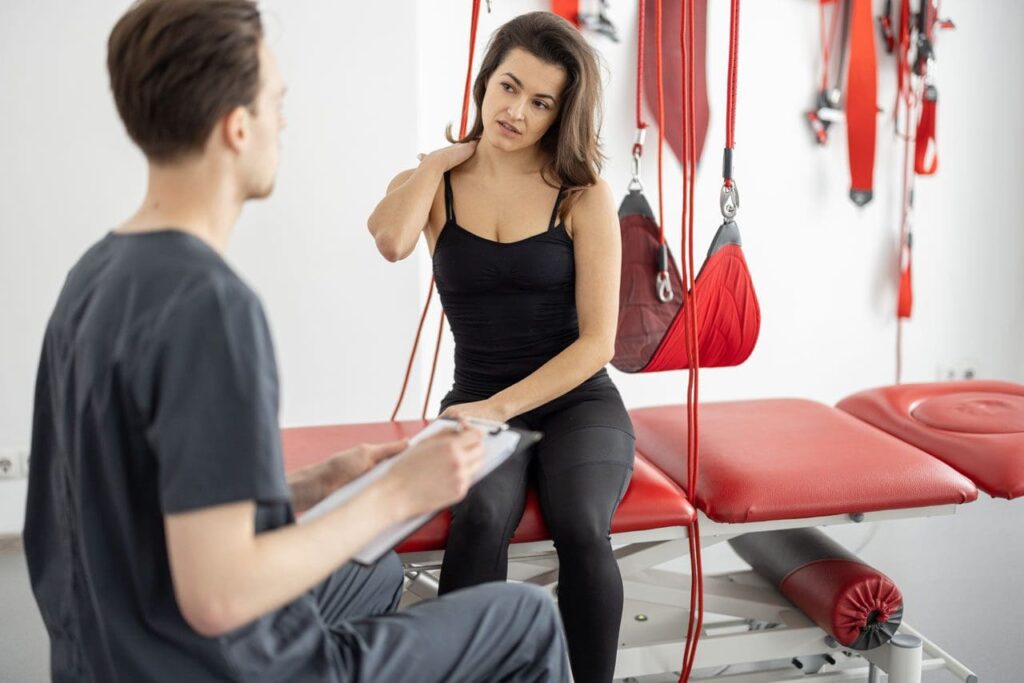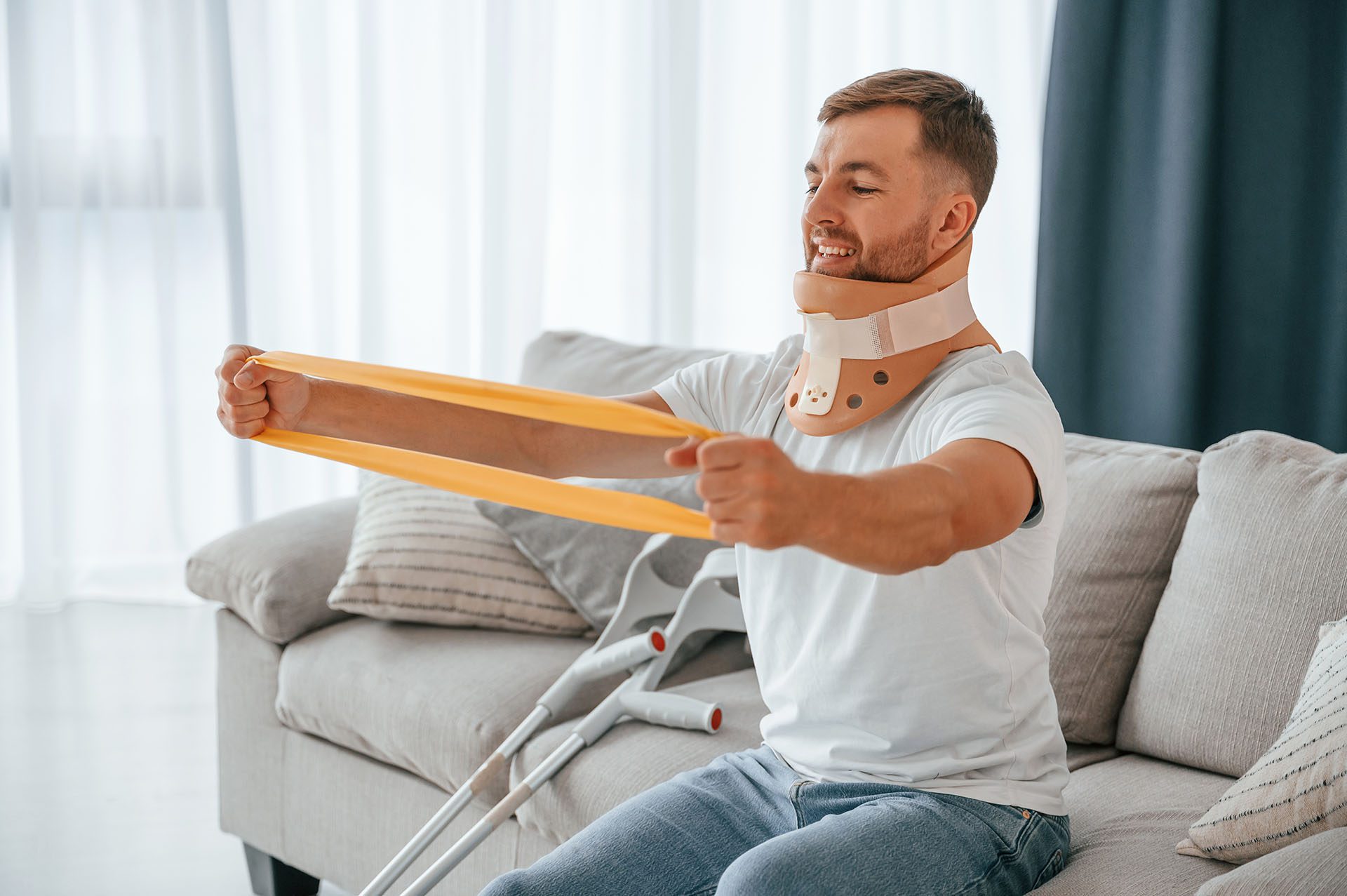From Crash to Recovery: The Role of Durable Medical Equipment

Motor vehicle accidents (MVAs) can lead to a range of musculoskeletal injuries, from minor strains to severe spinal damage, significantly affecting a person’s mobility, independence, and quality of life. Recovery from these injuries requires a comprehensive approach, including specialized medical devices known as Durable Medical Equipment (DME) and integrative medical care. This blog post explores the types of musculoskeletal injuries caused by MVAs, the essential role of DME in rehabilitation, and the expertise of professionals who combine advanced diagnostics, chiropractic care, and integrative medicine to support recovery. This article aims to inform and empower individuals recovering from auto accidents while optimizing for search engines with relevant keywords and structured content.
Understanding Musculoskeletal Injuries from Motor Vehicle Accidents
Motor vehicle accidents are a common cause of musculoskeletal injuries, impacting muscles, bones, joints, ligaments, and tendons. These injuries vary in severity based on the collision’s force, the body’s position during impact, and the individual’s health. Common injuries include:
- Whiplash: A neck injury from rapid head movement, often in rear-end collisions, causing pain, stiffness, and headaches.
- Back and Spinal Injuries: These may involve herniated discs, fractures, or misalignments, leading to chronic pain and limited mobility.
- Soft Tissue Injuries: Sprains, strains, or tears in muscles, tendons, or ligaments, resulting in swelling and restricted movement.
- Joint Injuries: Damage to shoulders, knees, or hips, causing pain and reduced range of motion.
- Nerve Damage: Compression or irritation of nerves, leading to tingling, numbness, or radiating pain, as in sciatica.
The sudden forces in an MVA, even at low speeds, can disrupt the body’s alignment and function. Research shows that 40.2% of MVA patients need ongoing treatment for persistent pain, with headaches and low back pain increasing treatment duration (Dies & Strapp, 1992). Without timely and appropriate care, these injuries can lead to chronic pain, disability, and reduced quality of life.
The Importance of Early Treatment
Seeking care within 72 hours of an accident is critical to prevent long-term complications. Symptoms like pain or stiffness may not appear immediately, making early intervention vital. Chiropractic care, physical therapy, and DME can address injuries promptly, reducing inflammation, restoring function, and preventing chronic issues.
References
Dies, S., & Strapp, J. W. (1992). Chiropractic treatment of patients in motor vehicle accidents: A statistical analysis. PMC. https://pmc.ncbi.nlm.nih.gov
El Paso Back Clinic. (2025). Injury Medical & Chiropractic Clinic. https://elpasobackclinic.com/
The Role of Durable Medical Equipment (DME) in Recovery
Durable Medical Equipment (DME) refers to reusable devices designed to aid recovery, improve mobility, and enhance quality of life for those with injuries. Prescribed by medical professionals, DME supports rehabilitation after MVAs, helping patients regain function and independence. These devices manage pain, support injured areas, and enable safe participation in physical therapy.
Types of DME for MVA Recovery
- Mobility Aids
- Examples: Canes, walkers, crutches, wheelchairs, and four-wheel-drive wheelchairs.
- Purpose: These devices assist individuals with limited mobility, reducing fall risks and further injury. For instance, a walker supports those with leg or back injuries, while a wheelchair aids severe spinal injury recovery (Family Health Associates, n.d.).
- Impact: Mobility aids restore independence, allowing patients to perform daily tasks like navigating their home.
- Orthotic Devices and Braces
- Examples: Cervical collars, back braces, knee braces, and ankle supports.
- Purpose: Braces stabilize injured areas, promote alignment, and reduce strain. A back brace supports the spine after a herniated disc, while a cervical collar manages whiplash by limiting neck movement (PhysioRoom, n.d.).
- Impact: These devices reduce pain, prevent further damage, and support proper healing.
- Exercise and Rehabilitation Equipment
- Examples: Resistance bands, balance boards, Pilates reformers, and exercise balls.
- Purpose: These tools aid physical therapy by improving strength, flexibility, and coordination. Pilates reformers offer low-impact resistance to strengthen core muscles and support spinal alignment, reducing reinjury risk (Pilates Reformers Plus, n.d.).
- Impact: Rehabilitation equipment helps rebuild strength and mobility, essential for returning to daily activities.
- Assistive Devices for Daily Living
- Examples: Grab bars, shower chairs, elevated toilet seats, and ramps.
- Purpose: These devices make daily tasks safer for those with limited mobility. Grab bars prevent bathroom falls, while ramps facilitate wheelchair access (Crossbay Physical Therapy, n.d.).
- Impact: Assistive devices enhance independence, reducing reliance on caregivers.
- Traction and Decompression Devices
- Examples: Cervical traction units and spinal decompression tables.
- Purpose: These devices relieve spinal pressure, reducing pain from herniated discs or nerve compression. They complement chiropractic adjustments in clinical settings (El Paso Back Clinic, 2025).
- Impact: Traction devices accelerate recovery by reducing inflammation and improving alignment.
Importance of Proper DME Selection
Selecting appropriate DME is vital for effective recovery. Medical professionals, such as chiropractors or physical therapists, assess injuries, mobility needs, and lifestyle to recommend suitable devices. For example, a patient with a spinal injury may need a custom-fitted back brace and walker, while someone with whiplash might benefit from a cervical collar and resistance bands. Improper equipment can worsen injuries or delay healing, highlighting the need for professional guidance (Penn Spine and Ortho, n.d.). In personal injury cases, DME documentation supports insurance claims and legal settlements by proving injury extent and treatment necessity (Power Liens, 2024).
Impact on Recovery and Quality of Life
DME enhances recovery by:
- Reducing Pain: Braces and traction devices alleviate pressure on injured areas.
- Restoring Function: Mobility aids and rehabilitation equipment rebuild strength and movement.
- Promoting Independence: Assistive devices enable patients to manage daily tasks.
- Improving Quality of Life: DME facilitates safe movement, helping patients return to work and hobbies.
For example, a patient with a spinal injury may progress from a wheelchair to a walker with therapy, eventually regaining mobility using exercise equipment. This progression boosts confidence and well-being.
References
Crossbay Physical Therapy. (n.d.). Support home health products aid recovery pain injury treatment Howard Beach New York. https://www.crossbayphysicaltherapy.com/support-home-health-products-aid-recovery-pain-injury-treatment-howard-beach-new-york.html
Family Health Associates. (n.d.). Spinal cord injury overview. https://fhahermiston.com/patient-education/healthwise/?DOCHWID=ug2941
Penn Spine and Ortho. (n.d.). Assistive devices for spine injury patients. https://pennspineandortho.com/spine-and-injury/assistive-devices-for-spine-injury-patients/
PhysioRoom. (n.d.). Back supports & braces. https://www.physioroom.com/back-supports-braces
Pilates Reformers Plus. (n.d.). Key features of a reformer machine for Pilates. https://pilatesreformersplus.com/blogs/news/key-features-of-a-reformer-machine-for-pilates
Power Liens. (2024, June 11). The vital role of Durable Medical Equipment (DME) in personal injury recovery. https://blog.powerliens.com/the-vital-role-of-durable-medical-equipment-dme-in-personal-injury-recovery/
El Paso Back Clinic. (2025). Injury Medical & Chiropractic Clinic. https://elpasobackclinic.com/
Integrative Care for MVA Recovery
Chiropractic clinics specializing in MVA injuries offer integrative care that combines advanced diagnostics, chiropractic adjustments, and functional medicine to address both physical and systemic effects of trauma. These clinics employ a team of chiropractors, physical therapists, and other specialists to create personalized treatment plans.
Comprehensive Diagnosis and Treatment
Integrative care involves a dual approach:
- Chiropractic Assessments: Evaluating spinal alignment, joint function, and soft tissue damage through manual exams and movement screens.
- Medical Evaluations: Assessing systemic factors like inflammation or nutritional deficiencies that impact healing.
- Advanced Diagnostics: Using X-rays, MRIs, CT scans, and electromyography (EMG) to detect injuries like disc herniations or nerve compression (El Paso Back Clinic, 2025).
This approach ensures a thorough understanding of injury causes. For example, a patient with back pain may have a spinal misalignment and inflammation, addressed through adjustments and nutritional guidance.
Role of Advanced Imaging
Advanced imaging is crucial for accurate diagnosis:
- X-rays: Detect fractures or misalignments.
- MRIs/CT Scans: Identify soft tissue injuries or nerve compression.
- EMG: Assess nerve function for symptoms like tingling.
- Functional Lab Testing: Evaluate metabolic or hormonal factors affecting recovery.
These tools provide objective evidence for treatment and legal documentation, ensuring targeted interventions (El Paso Back Clinic, 2025).
Chiropractic and Integrative Medicine
Integrative care combines:
- Spinal Adjustments: Correct misalignments to relieve nerve pressure and pain.
- Soft Tissue Therapy: Massage or myofascial release to reduce tension and improve circulation.
- Rehabilitation Exercises: Using DME like resistance bands to strengthen muscles.
- Nutritional Guidance: Reducing inflammation through diet and supplements.
- Acupuncture: Relieving pain and improving blood flow.
This holistic approach addresses symptoms and prevents complications. For example, a whiplash patient may receive adjustments, a cervical collar, and acupuncture to accelerate their recovery.
Legal Documentation in Personal Injury Cases
Chiropractic clinics provide detailed medical reports, imaging results, and DME prescriptions to support personal injury cases. These documents prove injury extent and treatment necessity, strengthening insurance claims and legal settlements (Personal Injury Doctor Group, 2017).
References
El Paso Back Clinic. (2025). Injury Medical & Chiropractic Clinic. https://elpasobackclinic.com/
Personal Injury Doctor Group. (2017). Car accident recovery with chiropractic and sports therapy. https://personalinjurydoctorgroup.com
Combining DME and Integrative Care
Integrative care and DME work together to maximize recovery:
- Whiplash Example: A patient receives a cervical collar, spinal adjustments, acupuncture, and resistance band exercises to reduce pain and restore neck mobility.
- Spinal Injury Example: A back brace and decompression table relieve spinal pressure, while adjustments and Pilates reformer exercises build strength. Nutritional guidance addresses inflammation.
This multi-faceted approach, guided by chiropractic specialists, ensures tailored treatment, faster recovery, and improved quality of life.
References
El Paso Back Clinic. (2025). Car crash wellness protocol: A guide to recovery. https://pushasrx.com
Oakmed LLC. (n.d.). Medical equipment in physical therapy. https://oakmedllc.com/medical-equipment-in-physical-therapy/
Conclusion
Musculoskeletal injuries from MVAs can disrupt lives, but recovery is possible with the right care. Durable Medical Equipment, such as mobility aids and braces, supports rehabilitation, reduces pain, and enhances independence. Integrative chiropractic care, combining advanced diagnostics, adjustments, and functional medicine, addresses injury root causes. By seeking specialized care promptly, patients can achieve lasting recovery and improved quality of life. Consult a chiropractic clinic after an MVA to explore how DME and integrative care can support your healing journey.
References
Crossbay Physical Therapy. (n.d.). Support home health products aid recovery pain injury treatment Howard Beach New York. https://www.crossbayphysicaltherapy.com/support-home-health-products-aid-recovery-pain-injury-treatment-howard-beach-new-york.html
Dies, S., & Strapp, J. W. (1992). Chiropractic treatment of patients in motor vehicle accidents: A statistical analysis. PMC. https://pmc.ncbi.nlm.nih.gov
El Paso Back Clinic. (2025a). Car crash wellness protocol: A guide to recovery. https://pushasrx.com
El Paso Back Clinic. (2025b). Injury Medical & Chiropractic Clinic. https://elpasobackclinic.com/
Family Health Associates. (n.d.). Spinal cord injury overview. https://fhahermiston.com/patient-education/healthwise/?DOCHWID=ug2941
Oakmed LLC. (n.d.). Medical equipment in physical therapy. https://oakmedllc.com/medical-equipment-in-physical-therapy/
Penn Spine and Ortho. (n.d.). Assistive devices for spine injury patients. https://pennspineandortho.com/spine-and-injury/assistive-devices-for-spine-injury-patients/
Personal Injury Doctor Group. (2017). Car accident recovery with chiropractic and sports therapy. https://personalinjurydoctorgroup.com
PhysioRoom. (n.d.). Back supports & braces. https://www.physioroom.com/back-supports-braces
Pilates Reformers Plus. (n.d.). Key features of a reformer machine for Pilates. https://pilatesreformersplus.com/blogs/news/key-features-of-a-reformer-machine-for-pilates
Power Liens. (2024, June 11). The vital role of Durable Medical Equipment (DME) in personal injury recovery. https://blog.powerliens.com/the-vital-role-of-durable-medical-equipment-dme-in-personal-injury-recovery/

